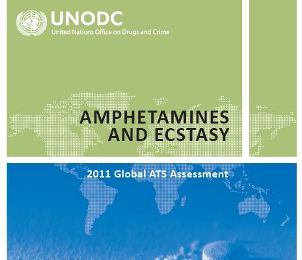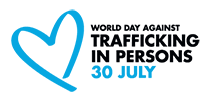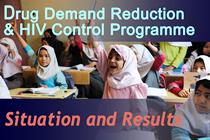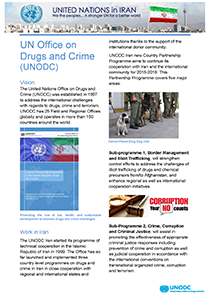UNODC: Amphetamine-type stimulants ranked world's second most used drug after cannabis
 Vienna. 13 September 2011. A new report released today by the United Nations Office on Drugs and Crime (UNODC) ranks amphetamine-type stimulants (ATS) such as ecstasy and methamphetamine as the world's second most widely used type of drug after cannabis. Offering the most comprehensive and current analysis of the situation, the
2011 Global ATS Assessment notes that the expansion of the drug's trade and the high criminal profits pose an increasing threat to security and health worldwide.
Vienna. 13 September 2011. A new report released today by the United Nations Office on Drugs and Crime (UNODC) ranks amphetamine-type stimulants (ATS) such as ecstasy and methamphetamine as the world's second most widely used type of drug after cannabis. Offering the most comprehensive and current analysis of the situation, the
2011 Global ATS Assessment notes that the expansion of the drug's trade and the high criminal profits pose an increasing threat to security and health worldwide.
While heroin and cocaine have attracted the majority of attention in recent years, ATS seizure figures and the discovery of clandestine laboratories show a rapidly growing area of concern. Whereas heroin, cocaine and cannabis remained largely stable in the period 2005 to 2009, ATS seizures (with the exception of ecstasy which remained constant) showed a clear increase over the same period. Affordable and easy to manufacture, ATS are attractive drugs of choice for millions of drug users in all regions of the world and offer criminals a new entry into unexploited and fresh markets. Unlike plant-based drugs such as opiates or cocaine, synthetic drugs can be manufactured anywhere with little initial investment required on the part of criminals.
According to the Assessment, the number of methamphetamine pills seized in South-East Asia grew significantly in recent years: from 32 million in 2008, to 93 million in 2009 and 133 million in 2010.
"The ATS market has evolved from a cottage-type industry typified by small-scale manufacturing operations to more of a cocaine or heroin-type market with a higher level of integration and organized crime groups involved throughout the production and supply chain," said UNODC Executive Director Yury Fedotov. "We are seeing manufacturing shifting to new markets and trafficking routes diversifying into areas previously unaffected by ATS."
The 2011 Global ATS Assessment notes an increase in South-East Asian countries that are reporting manufacturing of ATS, while interregional trafficking in countries with no previous history of the drug has also been seen. Between 2008 and 2009 ATS laboratories seized in East and South-East Asia soared from 288 to 458.
Methamphetamine may also be expanding into Europe with several countries reporting an increase in its use and production. There are some signs that the drug may be replacing amphetamine in certain parts of the continent.
West Africa - once thought to be largely unaffected by the illicit manufacture and trafficking of ATS - has now been drawn into the trade. As recently as June 2011 a methamphetamine laboratory was discovered in Nigeria, while ATS seized in several East Asian countries appear to have originated in West Africa.
Confirming the global spread of ATS, manufacture is also increasingly being reported from Central and South America, with laboratories dismantled in Brazil, Guatemala and Nicaragua.
In addition to amphetamines and ecstasy, established ATS markets have seen the emergence of new stimulant drugs - so-called analogue substances - which fall outside of international control. Emerging in 2010, substances such as mephedrone or methylenedioxypyrovalerone (MDPV) are sold as "bath salts" or "plant food" and act as substitutes for illicit stimulant drugs such as cocaine. Highly dangerous and as yet still deemed legal in many countries, these drugs remain widely available over the internet.
The use of ATS through intravenous means is another emerging concern with widespread health issues particularly given its links to the spread of HIV and AIDS. Indicators point towards a rise on this front most notably in East and South-East Asia, as well as parts of Western and Eastern Europe.
For further information please contact:
Kevin Town, Associate Public Information Officer: UNODC
T: (+43-1) 26060-5575 | M: (+43-699) 1459-5575 | E: kevin.town@unodc.org
Or
Alun Jones, Chief of Communication and Advocacy: UNODC
T: (+43-1) 26060-5726 | M: (+43-699) 1459-5726 | E: alun.jones@unodc.org



